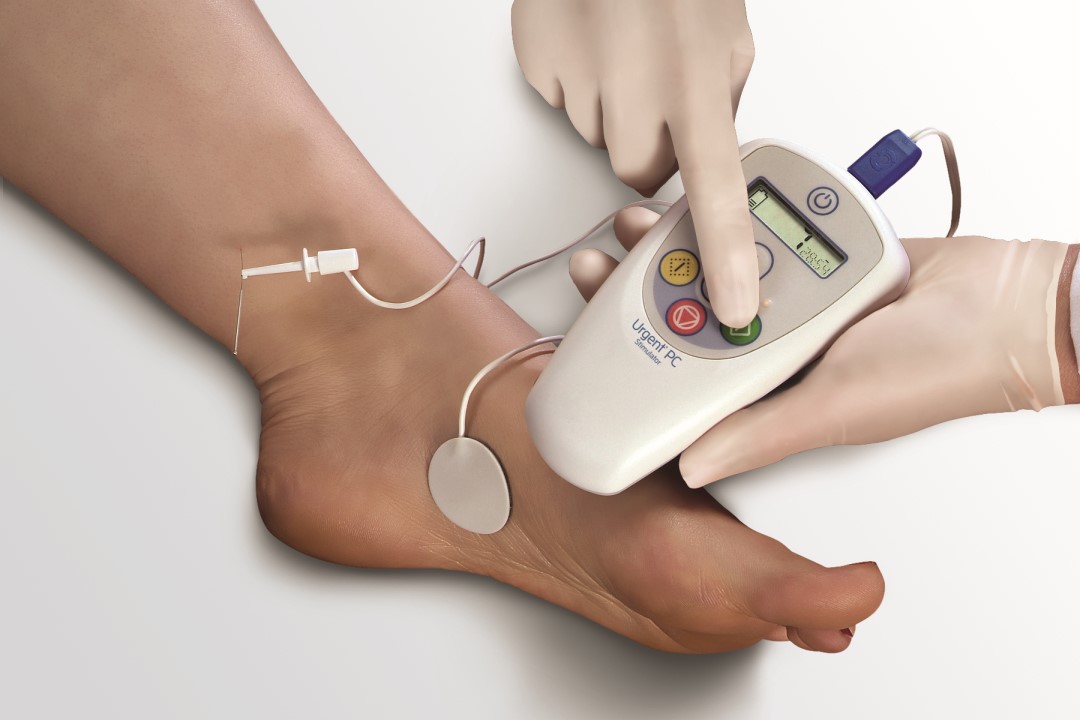What will I feel with Urgent PC therapy?
Because patients may experience the sensation of the Urgent PC therapy in different ways, it’s difficult to say what the treatment would feel like to you. Patients often describe the sensation as “tingling” or “pulsating.” Treatment is typically well-tolerated by patients. Urgent PC offers many different levels of stimulation, so your clinician will be able to adjust treatment to suit you as well as address any discomfort that you might experience during treatment.
How often will I need Urgent PC treatments?
You will receive an initial series of 12 treatments scheduled about a week apart. If you respond, you will likely need a treatment about once per month to maintain your improvements.
How soon will I see results with Urgent PC?
Because Urgent PC gently modifies the signals to achieve bladder and bowel control, it usually takes 5-7 weeks for symptoms to change. However, patients respond at different rates. In a review of about 100 patients who had success with Urgent PC, symptoms improved anywhere between 2-12 weeks. For about 20% of these patients, some symptoms didn’t improve until after 8 weeks.1
There is no way to anticipate who will respond earlier, later or not at all. That’s why it is important to receive the 12 recommended treatments before you and your physician evaluate whether this therapy is an appropriate and effective choice for you.
How can I receive treatment with Urgent PC?
Urgent PC is an option for patients with, urinary incontinence, urinary frequency and urinary urgency. If you have any of these symptoms talk to your doctor. Once diagnosed, your doctor will work with you to determine your own personal treatment plan which usually starts with behavior and diet modifications plus medications.
Are there patients who should not be treated with Urgent PC?
Yes, these include: patients with pacemakers or implantable defibrillators, patients prone to excessive bleeding, patients with nerve damage that could impact either percutaneous tibial nerve or pelvic floor function and patients who are pregnant or planning to become pregnant during the duration of the treatment.
What are the risks associated with Urgent PC?
The risks associated with Urgent PC therapy are low. Most common side-effects are temporary and include mild pain or skin inflammation at or near the stimulation site.
1. Leong, F., McLennan, M.T., Barr, S.A., & Steele, A.C. (2011). Posterior tibial nerve stimulation in patients who have failed anticholinergic therapy: efficacy and time to response. Female Pelvic Med Reconstr Surg 17:2, 74-75.
What will I feel with Urgent PC therapy?
Because patients may experience the sensation of the Urgent PC therapy in different ways, it’s difficult to say what the treatment would feel like to you. Patients often describe the sensation as “tingling” or “pulsating.” Treatment is typically well-tolerated by patients. Urgent PC offers many different levels of stimulation, so your clinician will be able to adjust treatment to suit you as well as address any discomfort that you might experience during treatment.
How often will I need Urgent PC treatments?
You will receive an initial series of 12 treatments scheduled about a week apart. If you respond, you will likely need a treatment about once per month to maintain your improvements.
How soon will I see results with Urgent PC?
Because Urgent PC gently modifies the signals to achieve bladder and bowel control, it usually takes 5-7 weeks for symptoms to change. However, patients respond at different rates. In a review of about 100 patients who had success with Urgent PC, symptoms improved anywhere between 2-12 weeks. For about 20% of these patients, some symptoms didn’t improve until after 8 weeks.1
There is no way to anticipate who will respond earlier, later or not at all. That’s why it is important to receive the 12 recommended treatments before you and your physician evaluate whether this therapy is an appropriate and effective choice for you.
How can I receive treatment with Urgent PC?
Urgent PC is an option for patients with, urinary incontinence, urinary frequency and urinary urgency. If you have any of these symptoms talk to your doctor. Once diagnosed, your doctor will work with you to determine your own personal treatment plan which usually starts with behavior and diet modifications plus medications.
Are there patients who should not be treated with Urgent PC?
Yes, these include: patients with pacemakers or implantable defibrillators, patients prone to excessive bleeding, patients with nerve damage that could impact either percutaneous tibial nerve or pelvic floor function and patients who are pregnant or planning to become pregnant during the duration of the treatment.
What are the risks associated with Urgent PC?
The risks associated with Urgent PC therapy are low. Most common side-effects are temporary and include mild pain or skin inflammation at or near the stimulation site.
1. Leong, F., McLennan, M.T., Barr, S.A., & Steele, A.C. (2011). Posterior tibial nerve stimulation in patients who have failed anticholinergic therapy: efficacy and time to response. Female Pelvic Med Reconstr Surg 17:2, 74-75.



